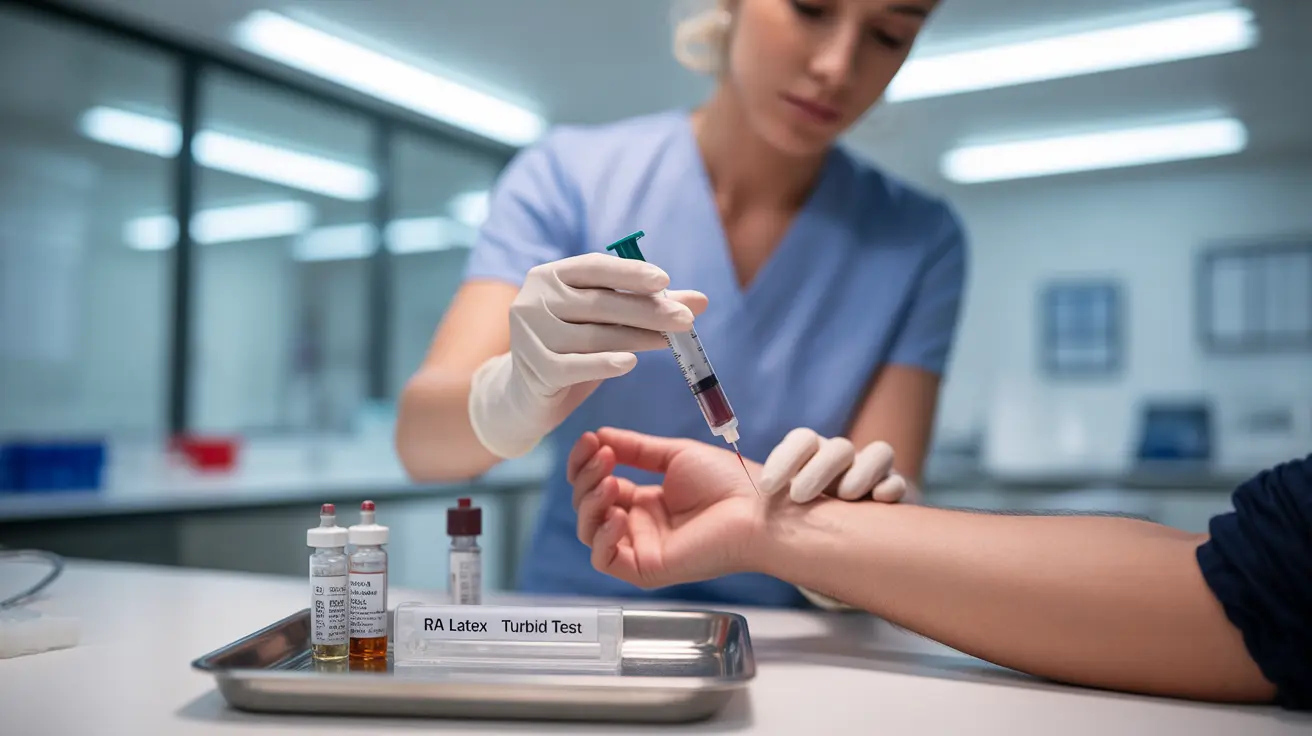The RA latex turbid test is a specialized blood test that healthcare providers historically used to help diagnose rheumatoid arthritis (RA). This diagnostic tool detects specific antibodies called rheumatoid factors (RF) in the blood, which can indicate the presence of autoimmune conditions, particularly rheumatoid arthritis.
While newer and more specific tests are now available, understanding the RA latex turbid test remains important for patients who may encounter it in their diagnostic journey or medical records. Let's explore what this test involves, its significance, and its current role in rheumatoid arthritis diagnosis.
How the RA Latex Turbid Test Works
The RA latex turbid test operates on a simple yet effective principle. When blood samples containing rheumatoid factor antibodies are mixed with latex particles coated with human immunoglobulin G (IgG), they cause a visible clumping reaction. This reaction creates a turbid, or cloudy, appearance in the test solution – hence the name "latex turbid."
The degree of turbidity correlates with the concentration of rheumatoid factor in the blood sample. Healthcare providers measure this turbidity to determine whether RF levels are elevated, which can help support a diagnosis of rheumatoid arthritis or other autoimmune conditions.
Test Procedure and Patient Experience
The RA latex turbid test requires a simple blood draw, typically taken from a vein in your arm. The procedure is quick, usually taking just a few minutes, and involves:
- Cleaning the injection site
- Inserting a small needle to draw blood
- Collecting the sample in a test tube
- Applying pressure to stop any bleeding
- Bandaging the site
Most patients experience minimal discomfort during the blood draw, though some might have slight bruising at the injection site afterward.
Understanding Test Results
Results from an RA latex turbid test are typically reported as either positive or negative, with some labs providing specific titer levels. A positive result indicates the presence of rheumatoid factor antibodies above a certain threshold, while a negative result suggests RF levels are within normal ranges.
However, test results must be interpreted carefully because:
- Some people with RA may test negative (seronegative RA)
- Healthy individuals can sometimes test positive
- Other conditions can cause elevated RF levels
- Results should always be considered alongside other diagnostic criteria
Current Status in Rheumatoid Arthritis Diagnosis
Modern rheumatology has largely moved away from relying solely on the RA latex turbid test for several reasons:
- More specific tests are now available, such as anti-CCP antibody tests
- The test's relatively low specificity for RA
- Better understanding of various RA biomarkers
- Advanced diagnostic criteria that incorporate multiple factors
Frequently Asked Questions
What is the RA latex turbid test and how does it help diagnose rheumatoid arthritis?
The RA latex turbid test is a blood test that detects rheumatoid factor antibodies by mixing a patient's blood sample with latex particles coated with IgG. When these antibodies are present, they cause visible clumping, helping healthcare providers identify potential cases of rheumatoid arthritis.
What do high results on an RA latex turbid test mean, and can they indicate conditions other than rheumatoid arthritis?
High results indicate elevated levels of rheumatoid factor in the blood. While this can suggest rheumatoid arthritis, it may also indicate other conditions such as Sjögren's syndrome, systemic lupus erythematosus, or chronic infections. The results must be interpreted alongside other clinical findings.
How is the RA latex turbid test performed and what should I expect during the procedure?
The test involves a standard blood draw from a vein in your arm. The procedure is quick, relatively painless, and requires no special preparation. You may experience minor discomfort during the blood draw and possibly slight bruising afterward.
Why is the RA latex turbid test less commonly used today compared to other rheumatoid arthritis blood tests?
This test is used less frequently today because newer, more specific tests like anti-CCP antibody testing offer better diagnostic accuracy. Modern rheumatology relies on a combination of more advanced blood tests and comprehensive diagnostic criteria.
Can a normal RA latex turbid test result rule out rheumatoid arthritis completely?
No, a normal (negative) result cannot completely rule out rheumatoid arthritis. Some people with RA are seronegative, meaning they don't produce detectable levels of rheumatoid factor but still have the condition. This is why doctors use multiple diagnostic tools and criteria to make a diagnosis.




